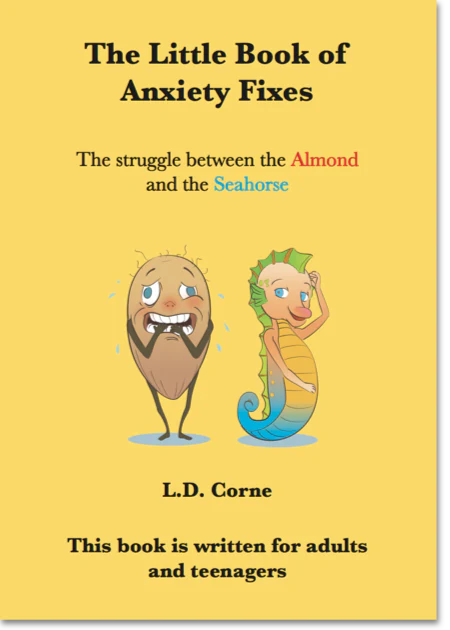Anxiety
Many people today suffer from anxiety disorders. The most common are panic disorder, agoraphobia, social phobia, obsessive-compulsive disorder, post traumatic stress disorder, specific phobia and generalized anxiety disorder.
A Little Book of Fixes
Are you someone who leads a busy life and can’t find the time to read long self-help books or attend therapy? I wrote The Little Book of Anxiety Fixes for you!
The Little Book of Anxiety Fixes
$15.00 AUD
‘The Little Book of Anxiety Fixes’, written by Lorraine Corne, is the first book in Australia that gives readers techniques to combat anxiety, worry and stress in less than 15 minutes.
Lorraine Corne has drawn on her 25 years in professional practice to write ‘The Little Book of Anxiety Fixes’ – an easily accessible and effective resource for busy people who suffer from anxiety and want to start changing the way they address difficult situations.
Kindle Edition available on Amazon.com
Panic Disorder
Involves a feeling of intense fear accompanied by symptoms such as palpitations, sweating, shaking or trembling, shortness of breath, chest pain or discomfort, fear of dying, nausea and other physiological changes. Read more about Panic Disorder.
Agoraphobia
Where a person avoids a wide range of situations due to fear of not being able to escape or get help in the event of a panic attack or a sense of acute anxiety. Common situations which are avoided include crossing bridges, crowded places and driving.
Social Phobia

When a person feels intense embarrassment and humiliation in social or performance situations and, because of the persistent fear, avoids situations which include dating, public speaking, eating in front of others.
Post Traumatic Stress Disorder
May develop as a result of directly experiencing, witnessing or hearing about a traumatic event. Some of the symptoms that a person suffers may involve intrusive thoughts, distressing dreams, intense distress, outbursts of anger, hyper vigilance and avoidance of situations.
Obsessive-Compulsive Disorder
Where a person has obtrusive and inappropriate thoughts, impulses or images referred to as recurrent obsessions. The way a person may cope with these intrusive thoughts is to use some other thought or action – a compulsion. The most common obsessions involve contamination, orderliness, repeated doubts, aggressive or horrific impulses and sexual imagery. The most common compulsions involve washing and cleaning, counting, checking, seeking assurances, ordering and repeating actions.
Generalized Anxiety Disorder
Characterized by anxiety and worry which is excessive and persistent and would revolve around job responsibilities, finances, health, family members, in other words, everyday life. A person may feel restless, have difficulties concentrating on a task, have disturbed sleep, and generally feel fatigued.
Specific Phobia
A feeling of anxiety when exposed to situations such as flying, heights, animals and enclosed spaces.
If you have concerns in these areas or one of your family members appears to be struggling with any of these symptoms, Lorraine can help.
Stress Management CD
Members can download my Stress Management CD here –
